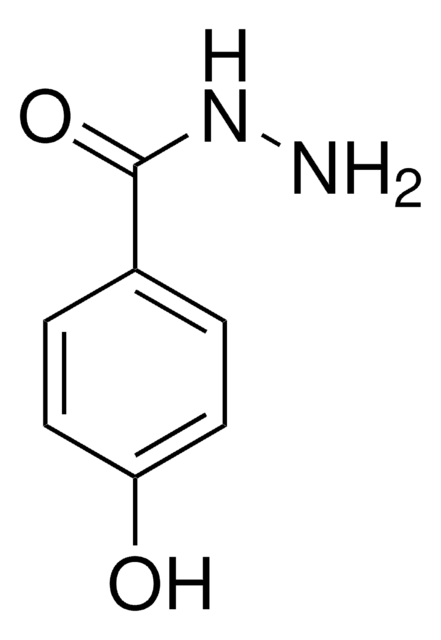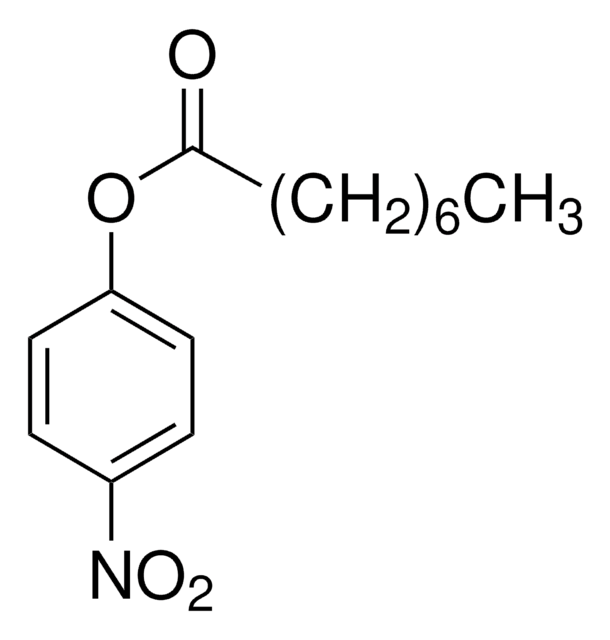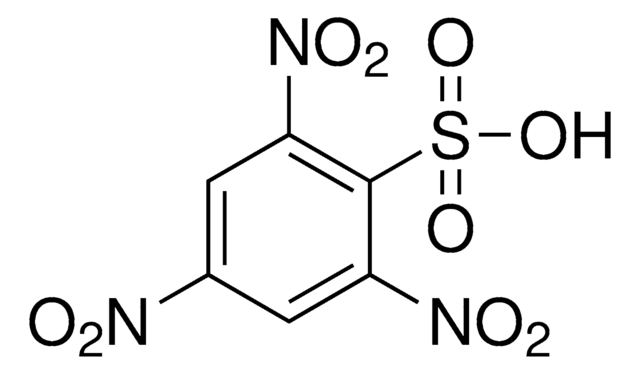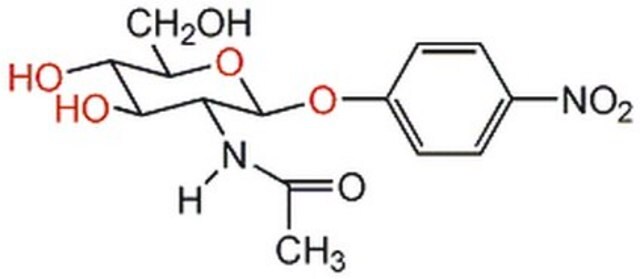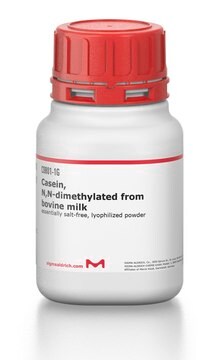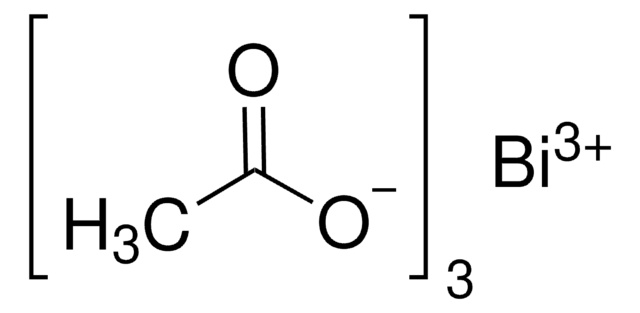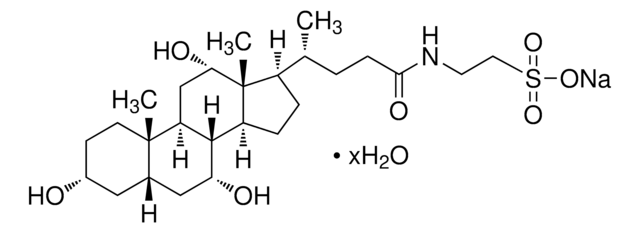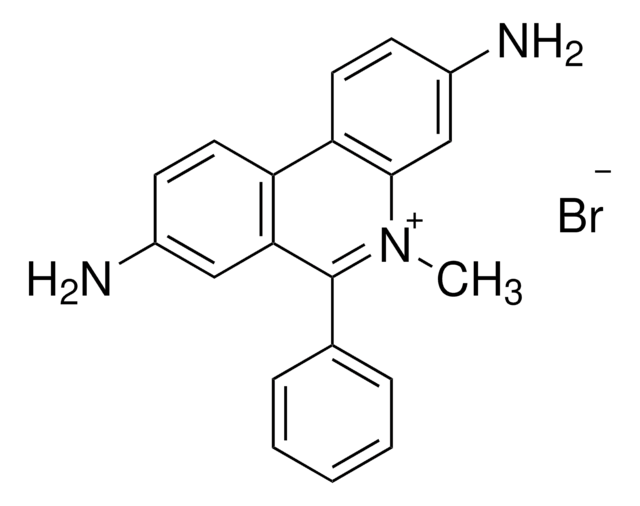N4377
4-Nitrophenyl valerate
chromogenic, ≥98% (TLC), liquid
Sinonimo/i:
Pentanoic acid 4-nitrophenyl ester
Autenticatiper visualizzare i prezzi riservati alla tua organizzazione & contrattuali
About This Item
Formula empirica (notazione di Hill):
C11H13NO4
Numero CAS:
Peso molecolare:
223.23
Numero MDL:
Codice UNSPSC:
12352204
ID PubChem:
NACRES:
NA.83
Prodotti consigliati
Nome del prodotto
4-Nitrophenyl valerate, liquid
Saggio
≥98% (TLC)
Stato
liquid
Colore
faintly yellow to dark yellow
Temperatura di conservazione
−20°C
Stringa SMILE
CCCCC(=O)Oc1ccc(cc1)N(=O)=O
InChI
1S/C11H13NO4/c1-2-3-4-11(13)16-10-7-5-9(6-8-10)12(14)15/h5-8H,2-4H2,1H3
RJQXEHRFVKJLJO-UHFFFAOYSA-N
Categorie correlate
Applicazioni
4-Nitrophenyl valerate has been used as a substrate solution to measure the rate of p-nitrophenol formation using p-nitrophenyl valerate as substrate. It has also been used as a substrate to measure general esterase activity in hepatopancreas extracts.
Azioni biochim/fisiol
4-Nitrophenyl valerate acts as a model substrate for carboxylesterase and butyrylcholinesterase.
Codice della classe di stoccaggio
11 - Combustible Solids
Classe di pericolosità dell'acqua (WGK)
WGK 3
Punto d’infiammabilità (°F)
Not applicable
Punto d’infiammabilità (°C)
Not applicable
Dispositivi di protezione individuale
Eyeshields, Gloves, type N95 (US)
Scegli una delle versioni più recenti:
Possiedi già questo prodotto?
I documenti relativi ai prodotti acquistati recentemente sono disponibili nell’Archivio dei documenti.
I clienti hanno visto anche
Xia Wen et al.
Toxicology, 416, 15-22 (2019-01-28)
Hepatic carboxylesterases (Ces) catalyze the metabolism of drugs, environmental toxicants, and endogenous lipids and are known to be regulated by multiple nuclear receptors. Perfluorooctanoic acid (PFOA) is a synthetic fluorochemical that has been associated with dyslipidemia in exposed populations. In
Sonja Kübelbeck et al.
Macromolecular bioscience, 18(7), e1800095-e1800095 (2018-06-06)
Herein, the synthesis of enzyme-polymer conjugates is reported. Four different activated polymers (mPEG-aldehyde, mPEG-NHS, maltodextrin-aldehyde, carboxymethyl cellulose aldehyde) are conjugated to the surface of protease, α-amylase, and lipase using two different strategies (reductive amination and alkylation with NHS-activated acid). Although
Mikael Skaanning Jørgensen et al.
Microbial cell factories, 13(1), 33-33 (2014-03-08)
The industrially applied filamentous fungus Trichoderma reesei has received substantial interest due to its highly efficient synthesis apparatus of cellulytic enzymes. However, the production of heterologous enzymes in T. reesei still remains low mainly due to lack of tools for
Sandeep Kondakala et al.
Toxicology and applied pharmacology, 337, 67-75 (2017-11-04)
The prevalence of obesity is increasing at an alarming rate in the United States with 36.5% of adults being classified as obese. Compared to normal individuals, obese individuals have noted pathophysiological alterations which may alter the toxicokinetics of xenobiotics and
George E Howell et al.
Food and chemical toxicology : an international journal published for the British Industrial Biological Research Association, 118, 821-829 (2018-06-24)
The effects of obesity on organophosphate pesticide-mediated toxicities, including both cholinergic and non-cholinergic targets, have not been fully elucidated. Therefore, the present study was designed to determine if high fat diet intake alters the effects of repeated exposure to chlorpyrifos
Il team dei nostri ricercatori vanta grande esperienza in tutte le aree della ricerca quali Life Science, scienza dei materiali, sintesi chimica, cromatografia, discipline analitiche, ecc..
Contatta l'Assistenza Tecnica.